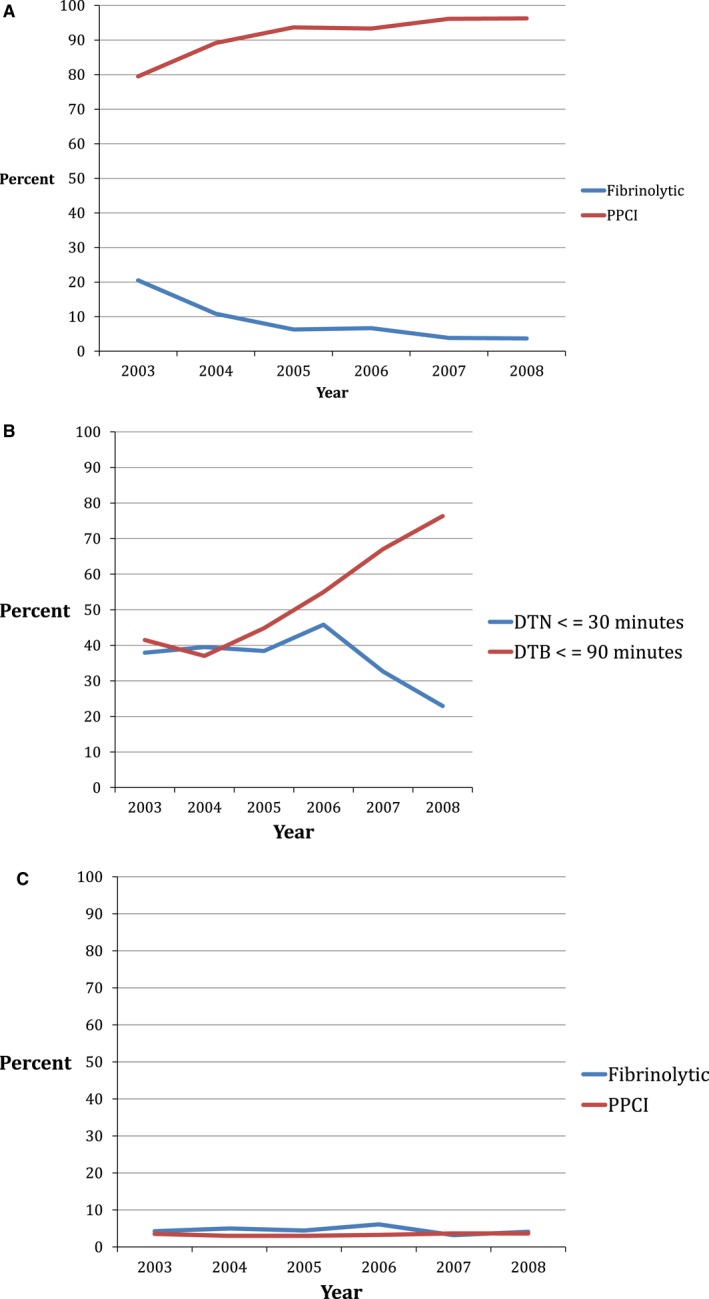Figure 2.

A, Annual trends in fibrinolysis and PPCI for patients with STEMI in the GWTG‐CAD database. The frequency of fibrinolysis decreased from 20.5% in 2003 to 3.7% in 2008 while PPCI increased from 79.5% in 2003 to 96.3% in 2008 (P value from Cochran‐Armitage test <0.0001). B, Annual trends in the proportion of patients receiving timely reperfusion with fibrinolysis (DTN ≤30 minutes) and PPCI (DTB ≤90 minutes) for patients with STEMI in the GWTG‐CAD database. The frequency of timely fibrinolysis peaked at 45.8% in 2006 and decreased to 22.9% in 2008 while timely PPCI increased from 37.0% in 2003 to 76.3% in 2008. (P value from Cochran‐Armitage test=0.2769 for DTN ≤30 minutes; P<0.0001 for DTB ≤90 minutes.) C, Annual trends of in‐hospital mortality for patients receiving fibrinolysis and PPCI. In‐hospital mortality was 4.6% in patients receiving fibrinolysis and 3.3% in patients receiving PPCI and did not change significantly over time. (P value from Cochran‐Armitage test=0.9473 for fibrinolytics patients, P=0.1474 for PPCI patients.) CAD indicates coronary artery disease; DTB, door to balloon; DTN, door to needle; GWTG, Get With the Guidelines; PPCI, primary percutaneous coronary intervention; STEMI, ST elevation myocardial infarction.
